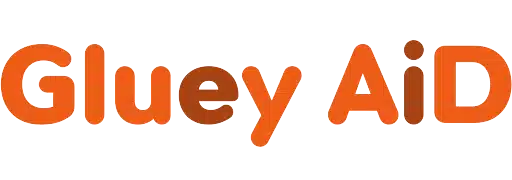When you are about to repair or decorate DIY crafts or execute professional tasks, the E6000 vs. B7000 can guide you in selecting the appropriate product based on your needs.
Page Contents
Article Highlights
- E6000 is a solvent-based, less transparent, and thicker gel-formed glue with industrial strength, having more outdoor impact resistance, and this is even non-flammable after a shorter curing period.
- B7000 is an epoxy-based, more transparent, and thin liquid glue with better adhesion for light and indoor tasks, having comparatively longer time for curing
- Both are adequate in their performance, having some differences, but the significant difference between them is the market price.
E6000 and B7000 are some of the most reliable products today for their versatile performance and durability.
As both glues are good with their individual results, one needs some additional information to differentiate between picking one of them.
In such case, you are about to explore these two glues with their individual pros and cons for enhancing your experience in craftsman works.
Learn More: E6000 vs E7000
E6000 vs. B7000
What is E6000?
With industrial strength, gel-formed glue is a reliable tool for craft or hardware-related operations.
E6000 comes with a needle nozzle and anti-clog cap in a tube. This kind of product design helps to be used multiple times.
By providing a permanent bond, this transparent glue is compatible with metal, glass, wood, fiberglass, masonry, ceramics, concrete, leather, rubber, vinyl, plastics, etc.

With outstanding strength, flexibility, and toughness, E6000 is photo-safe, printable, washer or dryer safe, and non-flammable.
Besides that, this glue can withstand temperatures of -40 °C to 93°C and UV exposures.
Therefore, it does not get brittle or break down in higher temperatures and also doesn’t get yellowish with time.
The E6000 can also resist water, chemicals, and abrasion.
As a solvent-based glue, the E6000 is much thicker in consistency. The solvent combines Tetrachloroethylene and Butadiene Copolymer.
With the needle-shaped nozzle, it is much easy to use. The nozzle helps to apply the glue on small particles for decoration and repair.
Make sure the surface is clean while applying the glue, and wait a few moments before attaching the required components after dispensing the glue.
After attaching, the glue requires 2 mins to cure and 24 to 72 hours for full curing of the applied glue.
Learn More: E6000 vs E6000 Plus
What is B7000?
B7000 is a transparent self-leveling glue used for several tasks like decoration and repair.
This single-component epoxy-based glue comes in a tube with a narrow nozzle with an airtight cap.
It is ideal for light items and items that require to be bent or moved. Initially, the glue is very runny and easy to spread on the surface, but it can also be difficult to handle.
This silicone-based glue is compatible with glass, ceramic, PVC, PE, ABA, PP, bamboo, wood, stone, leather, sponge, nylon, plastic, fiber, rubber, paper, cloth, rhinoceros, and whatnot.
Eligible to apply on small components like jewelry, toys, artificial flowers, phone repairs, showpieces, decorative items, braid necklaces, anklets, waist chains, bracelets, pendants, and other accessories.
By having such compatibility over different surfaces, the glue is considerably durable with water, vibration, oil, acid, alkali, and UV resistance.
Also, it is resistant to temperature, and when the glue is cured after application, it can withstand -40 °C and 90°C.
This liquid glue is easy to use even if the surface is too small to apply the glue to, as the nozzle is too thin to dispense precisely.
Learn More: B7000 Vs. E8000

Which One is Better? E6000 or B7000?
In the first place, the E6000 is a solvent-based glue, and the B7000 is a single epoxy-based glue. Here, the consistency of both glues is different.
The B7000 is less thick and runny in its characteristics, and the E6000 is much thicker than the B7000 and hard to spread on a surface.
Also, the B7000 is more transparent than E6000. But here, the E6000 is much better for outdoor applications, whereas the B7000 is more suitable for light indoor tasks.
Again, the E6000 is better for industrial bonds, and the B7000 is better for superior bonds in components.
According to curing time, the E6000 cures in 2 minutes and B7000 between 6 and 7 minutes. But each requires 24 to 72 hours for complete curing.
Based on their chemical composition, E6000 is more toxic than B7000, and B7000 is eco-friendly.
However, E6000 is nonflammable after curing, but B7000 is not. Having all these features, the E6000 is more affordable than B7000.
Learn More: T7000 Vs. E8000
| Particulars | E6000 | B7000 |
|---|---|---|
| Temperature Withstand (After Curing) | -40° to 93°C | -40° and 90°C |
| Initial Curing Time | 2 minutes | 6 to 7 minutes |
| Material | Tetrachloroethylene and Butadiene Copolymer | Silicon |
| Material Type | Solvent Type | Single Epoxy Based |
| Hardness After Curing | 80A | 70 – 85A |
| Non-flammable | Yes | N/A |
Editor’s Opinion
As discussed elaborately, these glues differ in their characteristics in various scenarios. Although these are robust in their performances.
If you are about to choose a glue with high industrial strength and more outdoor impact resistance, then the E6000 is better than the B7000.
But if you want more transparency and adhesion, B7000 is better than E6000. Also, the B7000 is much more suitable for mobile phone repair.
However, the E6000 is much more affordable than the B7000, and the E6000 is non-flammable at these price points.
Following all this information, it is to be cleared with a smart decision that E6000 is much more preferable than the B7000 glue.




